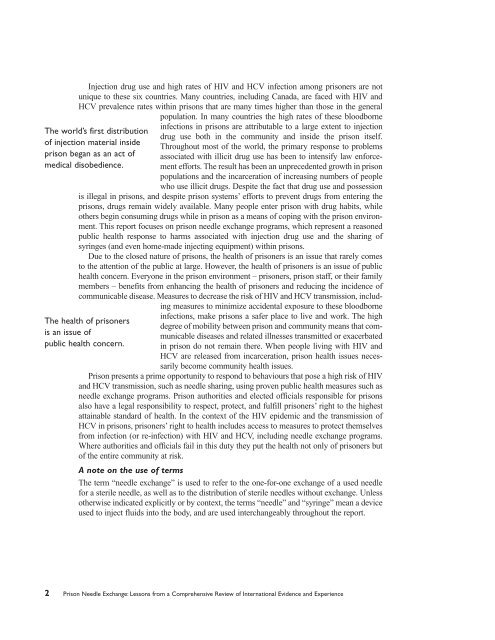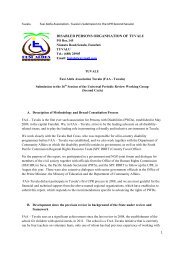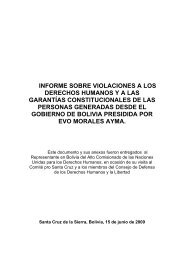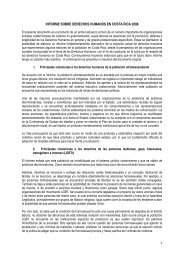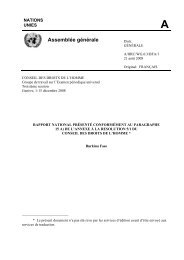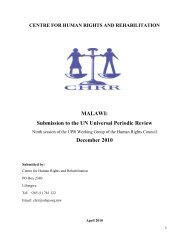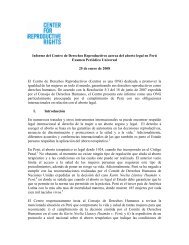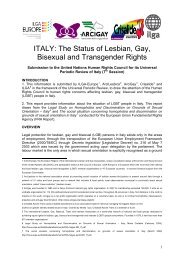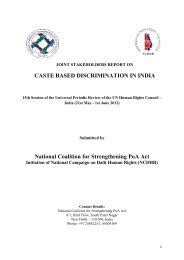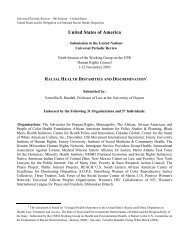Prison Needle Exchange: Lessons from a Comprehensive Review ...
Prison Needle Exchange: Lessons from a Comprehensive Review ...
Prison Needle Exchange: Lessons from a Comprehensive Review ...
Create successful ePaper yourself
Turn your PDF publications into a flip-book with our unique Google optimized e-Paper software.
Injection drug use and high rates of HIV and HCV infection among prisoners are not<br />
unique to these six countries. Many countries, including Canada, are faced with HIV and<br />
HCV prevalence rates within prisons that are many times higher than those in the general<br />
population. In many countries the high rates of these bloodborne<br />
infections in prisons are attributable to a large extent to injection<br />
drug use both in the community and inside the prison itself.<br />
Throughout most of the world, the primary response to problems<br />
associated with illicit drug use has been to intensify law enforcement<br />
efforts. The result has been an unprecedented growth in prison<br />
populations and the incarceration of increasing numbers of people<br />
who use illicit drugs. Despite the fact that drug use and possession<br />
is illegal in prisons, and despite prison systems’ efforts to prevent drugs <strong>from</strong> entering the<br />
prisons, drugs remain widely available. Many people enter prison with drug habits, while<br />
others begin consuming drugs while in prison as a means of coping with the prison environment.<br />
This report focuses on prison needle exchange programs, which represent a reasoned<br />
public health response to harms associated with injection drug use and the sharing of<br />
syringes (and even home-made injecting equipment) within prisons.<br />
Due to the closed nature of prisons, the health of prisoners is an issue that rarely comes<br />
to the attention of the public at large. However, the health of prisoners is an issue of public<br />
health concern. Everyone in the prison environment – prisoners, prison staff, or their family<br />
members – benefits <strong>from</strong> enhancing the health of prisoners and reducing the incidence of<br />
communicable disease. Measures to decrease the risk of HIV and HCV transmission, including<br />
measures to minimize accidental exposure to these bloodborne<br />
The world’s first distribution<br />
of injection material inside<br />
prison began as an act of<br />
medical disobedience.<br />
infections, make prisons a safer place to live and work. The high<br />
degree of mobility between prison and community means that communicable<br />
diseases and related illnesses transmitted or exacerbated<br />
in prison do not remain there. When people living with HIV and<br />
HCV are released <strong>from</strong> incarceration, prison health issues necessarily<br />
become community health issues.<br />
<strong>Prison</strong> presents a prime opportunity to respond to behaviours that pose a high risk of HIV<br />
and HCV transmission, such as needle sharing, using proven public health measures such as<br />
needle exchange programs. <strong>Prison</strong> authorities and elected officials responsible for prisons<br />
also have a legal responsibility to respect, protect, and fulfill prisoners’ right to the highest<br />
attainable standard of health. In the context of the HIV epidemic and the transmission of<br />
HCV in prisons, prisoners’ right to health includes access to measures to protect themselves<br />
<strong>from</strong> infection (or re-infection) with HIV and HCV, including needle exchange programs.<br />
Where authorities and officials fail in this duty they put the health not only of prisoners but<br />
of the entire community at risk.<br />
The health of prisoners<br />
is an issue of<br />
public health concern.<br />
A note on the use of terms<br />
The term “needle exchange” is used to refer to the one-for-one exchange of a used needle<br />
for a sterile needle, as well as to the distribution of sterile needles without exchange. Unless<br />
otherwise indicated explicitly or by context, the terms “needle” and “syringe” mean a device<br />
used to inject fluids into the body, and are used interchangeably throughout the report.<br />
2 <strong>Prison</strong> <strong>Needle</strong> <strong>Exchange</strong>: <strong>Lessons</strong> <strong>from</strong> a <strong>Comprehensive</strong> <strong>Review</strong> of International Evidence and Experience


